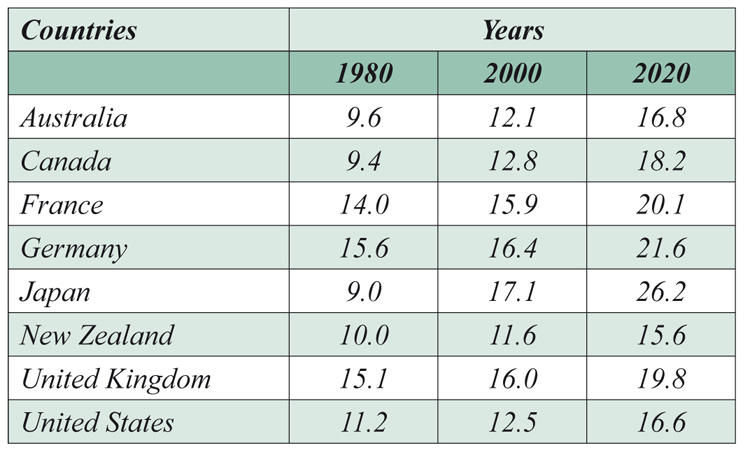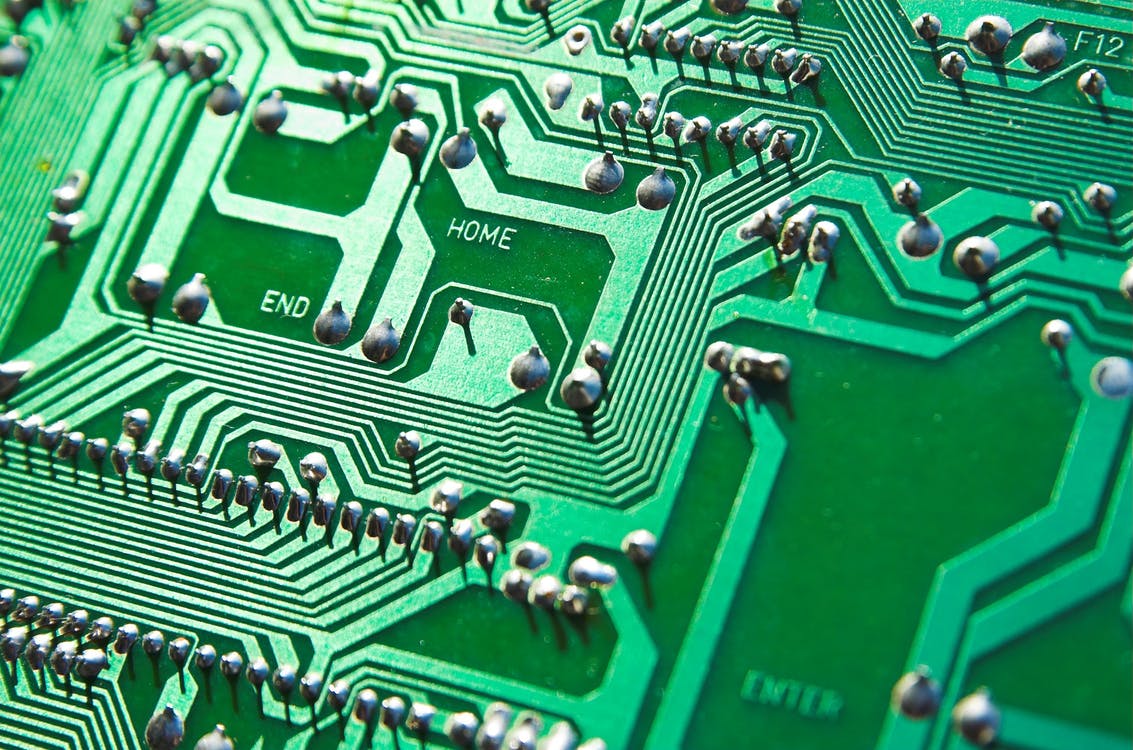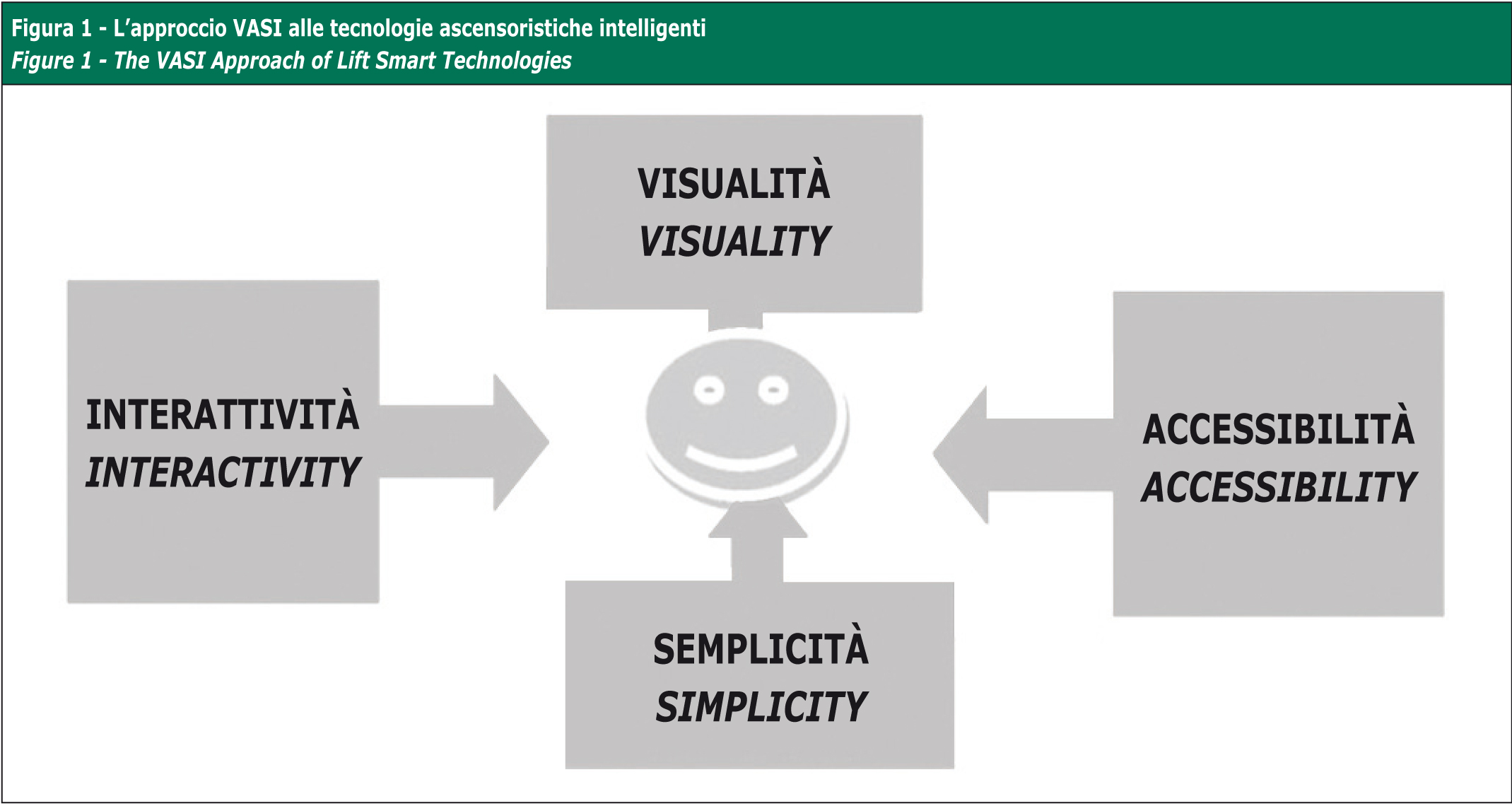Lift smart technologies for elders
ABSTRACT
We are experiencing an expanding ageing society. The 80% of the population of the developed world lives in urban centres. The projections show that elders will be doubled within the next 50 years, with the majority of them living in cities, increasing the demand for more and well-organised urban centres. In this respect, lift technologies have and will have tremendous importance. A critical aspect is to understand how lift smart technologiescan contribute in assisting older people that, in many cases, are not so familiar with them. Therefore, this paper seeks to explore the principles that the elevators’ technologies in the future should be focused as well as to what extent older people can adjust to new smart technologies. Following a development of arguments, this paper proposes a new four-fold approach that lift technologies should emphasise. This approach is called V.A.S.I. from the words: Visual, Accessible, Simple and Interactive.
INTRODUCTION
In recent years ageing has become particularly newsworthy, since many people are living much longer, especially in advanced economies. This is the positive outcome of much technological advancement especially in the medical care and nutrition domain. In 1930 an American male could, on average, expect to live to 60, now it is 76; and centenarians, once a rarity, are not uncommon (Fineman, 2014).
Nevertheless, an ageing population also places stresses on national economies, organizations and social services of all kinds. A research study reports that many older people ‘cannot readily climb stairs, haul themselves to the top bunk, or walk long distances to meals or the pill line; … need wheelchairs, walkers, canes, portable oxygen, and hearing aids’ (Human Rights Watch, 2012). In short, an ageing population has tested the limits of later-life medical provision, care homes and family support.
This ageing process is often regarded purely as a socioeconomic problem, with worrying implications for social security and health care systems. This paper though suggests a new perspective, in which ageing and demographic change is seen as a major positive opportunity for the Lift industry. The opportunity lies in innovative technological and organizational responses to the challenges of an ageing population.
In this respect, it is critical to understand how we can help an ageing population have the quality of life that deserves. In other words, it is important to think the aspects of current and future technologies that are (or will) targeting in serving the elders. Lift technologies seem to play and they will in the future a critical role towards serving an ageing population. Therefore, this paper aims to present and analyse an approach that lift technologies should follow in order to accommodate the needs of an ageing population.
This paper is structured in four sections. Section one examines briefly the phenomenon of the ageing and its implications for societies and economies. The second section focuses on the role of technology and explores its contribution. The third section explains the implications for the Lift industry by suggesting the VASI approach. Finally, the paper is completed by specific conclusions related to future lift products and technologies that are moving towards the direction of serving the elders.
AGEING OF SOCIETIES & MAIN IMPLICATIONS
Population ageing, defined as a process which increases the proportion of old people within the total population, is one of the main problems of this century. It affects or will affect both developed and developing countries. The population of developed countries is ageing fast, and the developing world is only a few decades behind. The proportion of the population aged 65 and over is expected to triple in less developed countries over the next 40 years, rising from 5.8 to 15 per cent of the total population, while in the more developed countries this figure is expected to rise from 16 to 26 per cent (an increase of more than 60 per cent), the ISSA report says (Scardino, 2009). While in 2010 the 65+ people constituted the 15 per cent of the global population, in 2060 this will be doubled rising to 30%.In other words, in the developed countries one person in three will be a pensioner.
Table 1 - Percentage of total population in developed countries age sixty-five and older 1980-2020

As it shown in the Table 1 below, between 1980 and 2000 the proportion of the population age sixty-five and older increased in the seven developed countries. The predictions for the future (2020) are even more interesting. Between 2000 and 2020 the relative size of the population age sixty-five and older is projected to increase rapidly in all countries (Anderson and Hussey, 2000). In particular, the United Kingdom is projected to have the smallest rise (from16.0 to 19.8 percent) and Japan, the largest (from 17.1 to 26.2 percent). In 2020 the percentage of the population over age sixty-five is projected to range from a high of 26.2 percent in Japan to a low of 15.6 percent in New Zealand. In 2020 more than 20 percent of the populations in France, Germany, and Japan will be age sixty-five or older, while less than 17 percent of the populations in Australia, New Zealand, and the United States will be in that age group.
A critical implication of an ageing population is the impact on national economies and their services towards these people. Public expenditure on health soaks up a large part of government budgets. According to an OECD report (Dang, Antolin & Oxley, 2001), the over-65 age group accounts for 40-50% of healthcare spending and their per capita healthcare costs are three to five times higher than for those under 65. And there are fears that public expenditure could rise as ageing in OECD countries accelerates. Between one-third and one-half of total health care spending goes for the elderly in each of the developed countries of the previous table. Japan spends the largest proportion on the elderly, while Germany spends the least (Anderson and Hussey, 2000). Japan spends proportionally the most on the elderly (4.8 times the amount spent on younger persons), while Germany spends the least (2.7 times). Also, it is well known that the United States spends more on health care than other industrialized countries do. This is also true for the elderly population. Average health spending for the elderly ranged from $3,612 per person in the United Kingdom to $12,090 in the United States in1997 (Anderson and Hussey, 2000).
Of course, it would be a fallacy to presume that the broad characteristics of a community, in statistical terms, tell us how each and every individual will age because, amongst other things, ageing implicates genetics, fitness, family care and cultural behaviours. But, based on the above data we can argue that ageing is and it will be a critical issue on the political and economic agendas of the developed countries. This means that at least in these countries technologies will be needed to support services towards the elderly. These technologies need to support existed infrastructures making them more accessible and widely used.

TECHNOLOGIES & AGEING POPULATION
Simultaneously with the aging of the population, we are witnessing unprecedented development and the diffusion of technology into all aspects of everyday life. Currently, all forms of technology, including computers, communications, safety, and health monitoring devices, are being used to perform routine tasks and activities. The use of technology has become an integral component of work, education, communication, and entertainment (Czajaand Sharit, 2009).
Technology has a lot of potentials in improving the quality of life for older people. For example, telemedicine/e-health can improve the physical and emotional well-being. Technology can also enable older people to remain connected to family and friends, especially with those who are distant. Technology can also help older people remain employed and maintain or upgrade their skills, or it can ease the transition to retirement (Czajaand Sharit, 2009). Nevertheless, recent evidence shows that the potential benefits of technology for older adults have not been realized in all of its essence. In 2007, about 32 percent of people age 65 and more were Internet users, as compared to 65 percent of people age 50 to 64 and 83 percent of people age 30 to 49. Moreover, the number of older people who have adopted home broadband is also lower than in the general population. In 2007, only 15 percent of people aged 65+ had broadband access at home, which limits the scope and potential of their online experience (Pew Internet& American Life Project, 2007).
The widespread use of technology in the larger society suggests that the lack of technology use among older adults will have increasingly negative implications. For example, older people, who are most likely to need medical care, may not have access to health care technologies. In conclusion, older people have largely been ignored as a viable user group by designers of technology systems (Czajaand Sharit, 2009).
Although older people will have more technology experience in the future, they may still have problems adopting or negotiating technologies with new features unless system designers perceive older adults as an important user group and take their needs into account. This is a great challenge for all industries including the lift industry.
LIFT TECHNOLOGIES & AGEING: THE VASI APPROACH
From the above argument we can conclude that user-centered design should be at the core of the current and future technologies that target to facilitate and simplify the life of people. The need is even more critical if we consider the elders. In particular, the development of technologies can address in an effective and efficient level the problems of older adults and help them retain and enjoy independence in their later years. One critical aspect of this approach is that new technologies should show the appropriate respect to those people. This means that new technologies require the participation of a broad range of stakeholders in the process of development and direction. In general, older people should not be excluded from social debates as to the directions of technological development effort. In particular, older people should not be excluded from the design, development, production and use of new technologies.
The implications for lift industry are tremendous. First of all, we all understand how useful elevators are for elderly people, and especially for those with mobility difficulties. At the same time, there is evidence coming from Austria, France, Greece and Sweden, supporting that 60% of all elevator related injuries among adults affect the elderly (Sih, et al., 2012). More specific to elderly people, the majority of the injuries are related to entering and/or exiting elevators caused by devices stopping above or below landing result in 50% of cases, as well as trapping between elevator’s doors (McCann & Zaleski, 2006). Therefore, there is a need for smart technologies that can provide the appropriate sense of safety especially among this group of people.
In other words, new, smart solutions are required. However it is not enough simply to establish research and development actions. Successful development of such technologies will require the establishment of new approaches to the identification and involvement of users and an integration of social and technical innovation. In particular, the design, development and production of new and smart technologies for elevators and lifts should follow specific principles through which they can respond to the needs of older people. We suggest that these principles should be people oriented and actually older people centred.
They can be the foundation of the majority of the projects targeting the development of technologies that seek to improve the function of elevators and different types of lifts. In this respect, we suggest the VASI (the Greek word for Foundation – ‘Basis’) approach as a method of making sense what current and future lift smart technologies should be based one. The VASI approach (see Figure 1) is based on four principles that lift technologies should follow in order to be easily and widely used by older people.

- Visuality – The technology should be easily viewable and distinguishable from a given distance, in order to create feelings of safety and security to the elders. It creates a sense of safety and security when we can see the system that we interact. Moreover, in case that this visuality is more relevant to human interaction the better the results.
- Accessibility – The technology should be easily accessible for all different people of particular age. It should be easily accessed by older people, or people that they use wheelchairs. It is critical to argue that the 90 per cent of the disable are more than 65 years old. Accessibility is also related with a sense of using the system in a simple and easy way, using human aspects of behaviour, like speech.
- Simplicity – The technology should be as simple as possible in order to help users understand what they need to do and how. It is critical, to use the most easy communication code that can be understood and used by the majority of the users, especially thinking the ability of elders. Not all elders are familiar with technology. For example, touch screen technologies seem to provoke a critical problem for them since according to evidence cannot be easily used by them. Finally, mental disabilities (connected with diseases like Alzheimer, etc.) impose that the simplicity in the interaction with technology is a necessity for older people.
- Interactivity – The Technology should give the sense of interaction being ready to respond to user’s requests and possible misunderstandings, increasing his/her feeling of security and safety. It is critical in other words to create a system that through interaction provides the possibility of correcting faulty orders and/or processes that the users may initially give.
CONCLUSIONS
This paper addressed the role of the elevators’ technologies in the future home design for elders as well as to what extent these people can adjust to new smart technologies. In recent years ageing has become particularly newsworthy, since many people are living much longer, especially in advanced economies.This ageing process is often regarded purely as a socioeconomic problem, with worrying implications for social security and health care systems. This paper though suggests a new perspective, in which ageing and demographic change is seen as a major positive opportunity for the Lift industry. The opportunity lies in innovative technological and organizational responses to the challenges of an ageing population. It is critical therefore to understand how we can help an ageing population have the quality of life that deserves. It is also important to think the aspects of current and future technologies that are targeting in serving the elders. Lift technologies seem to play and they will in the future a critical role towards serving an ageing population.Technology has a lot of potentials in improving the quality of life for older people. Nevertheless, recent evidence shows that the potential benefits of technology for older adults have not been realized in all of its essence. The widespread use of technology in the larger society suggests that the lack of technology use among older adults will have increasingly negative implications. In conclusion, older people have largely been ignored as a viable user group by designers of technology systems.This has an impact on Lift industry as well. First of all the current demographic trends, such the incremental increase of the population of elders with the majority of them to live in urban centres, implies that new lift products need to be developed and mainly to be adjusted to the needs of these people. Secondly, in relation to the previous argument, we can conclude that user-centered design should be at the core of the current and future lift technologies that target to facilitate and simplify the life of people and especially those that is difficult to use some technologies.Following this rationale, this paper proposes a new four-fold approach that lift technologies should emphasise. This approach is called V.A.S.I. (the Greek word for Foundation – ‘Basis’) from the words: Visual, Accessible, Simple and Interactive.Currently, there are examples of these technologies that respond to the above need. Talk2Lift is a prime example. Talk2Lift is voice recognition system of an elevator includes a microphone, a central process unit, a battery, an interaction unit with the elevator system, a mobile connection unit. The voice recognition device fits in an elevator cabin by voice commands and user-passenger of the elevator can guide it to the desired destination in the building. Beyond this basic function, connection to mobile network and/or telephony allows user-passenger of the elevator to communicate with the competent authorities (fire department, police, etc) in case of emergency. Talk2lift can be used as a great assistance to older as well as visually impaired people that can be supported in their access and destinations. Its design and development followed the VASI approach.
Eleftherios Papageorgiou, Nikolaos Stratigakis & Alexandros Psychogios
Entranet Ltd
Greece

